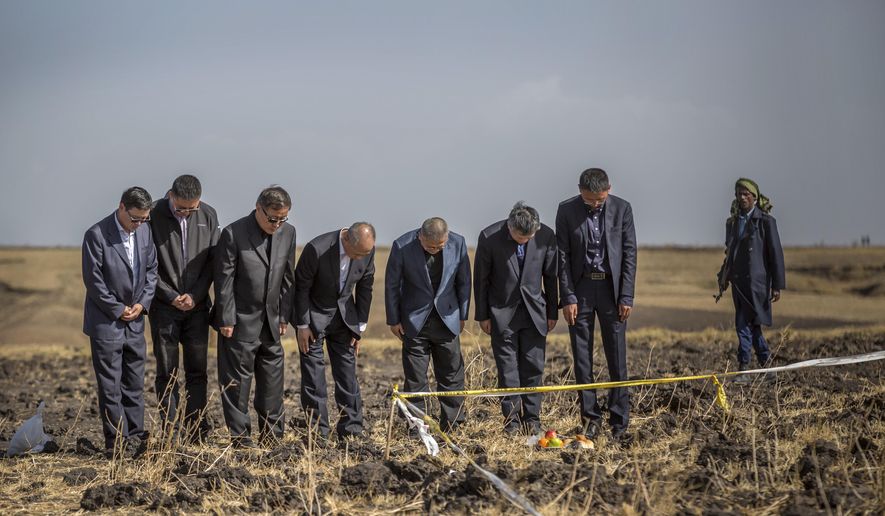OPINION:
China was the first nation to ground the Boeing 737 Max 8 after the horrific Ethiopian Airlines crash Sunday which killed over 150 people. The morning after the accident, Beijing issued its order to prevent the U.S.-made aircraft from flying in its airspace.
The timing was no accident: China is taking full advantage of the tragedy in its bid to unseat Boeing as the world leader in aircraft production — and to harm American industry in the process.
The two recent crashes involving the Max 8 come at an inopportune time for the Trump administration, smack in the middle of intense trade talks designed to stop China from stealing American technology, manipulating its currency, and using the American market as a dumping ground for Chinese goods generated by the state’s misallocation of capital and production resources.
The Chinese would like nothing more than to crack Boeing’s hold on the commercial aircraft market and put to use all those stolen designs its cyber army has pilfered from the American aviation industry and defense establishment.
Meanwhile the trade negotiations drag on in Washington, with a possible meeting between President Trump and Chinese President Xi Jinping now reportedly put off until next month at the earliest.
China’s state-controlled business sector has long targeted the markets that Boeing and European rival Airbus now dominate. The state-owned Commercial Aircraft Corporation of China (COMAC) has reportedly secured over 700 orders — mostly from Chinese customers — for its C919 plane, which is designed, oddly enough, to compete with the Boeing 737 Max 8.
Now you can see why Chinese authorities were so quick to ground the Max 8 — which accounts for a third of Boeing’s recent profits — even before all the data were in from the Ethiopian incident.
To borrow a phrase from my Air Force days, what a target of opportunity!
“It is highly unusual for regulators in a major country to take such a step before a similar move by regulators in the country that certified the aircraft type,” noted the Wall Street Journal. China was reportedly also behind the push for other nations worldwide to take action against the Max 8, who also acted before the U.S. finally issued its own order Wednesday.
Aviation Week reported that the final C919 prototypes are scheduled to fly in the latter half of this year and that deliveries could start in 2021 to China Eastern Airlines. COMAC aims to take a fifth of the global narrow-body commercial plan market and a third of the Chinese market by 2035.
As a former aeronautical engineer and U.S. Air Force pilot, my best guess is that the 737 Max 8 crashes will most likely be attributed to crew training and pilot error. It was reported of the Indonesian Lion Air crash in October that the pilots corrected an automated nose-down response to a faulty sensor 26 times before losing control of the aircraft. All they had to do was push a button to turn off the automated system.
The co-pilot in the Ethiopian Airlines crash this week only had 200 hours of flying time, a shocking and criminally negligent situation for a plane with 157 people on board.
It is highly unlikely that a trained, experienced Western pilot would have made the same fatal mistake.
Despite the current global concern, it is likely a fix will be found and the Max 8 will repeat the experience of the Boeing 777 Dreamliner, which also was grounded early in its rollout over battery problems but went on to become a huge financial and commercial success globally.
Opportunistic U.S. politicians like Sen. Mitt Romney, who called for the Max 8 to be grounded before much of the evidence was even collected, should remember that rivals such as China are already using this crash as a weapon against one of the last dominant American manufacturing companies.
I guess there is a reason former Sen. Rick Santorum once memorably described Mr. Romney as “a well-oiled weather vane.”
• L. Todd Wood is a former special operations helicopter pilot and Wall Street debt trader, and has contributed to Fox Business, The Moscow Times, National Review, the New York Post and many other publications. He can be reached through his website, LToddWood.com.




Please read our comment policy before commenting.